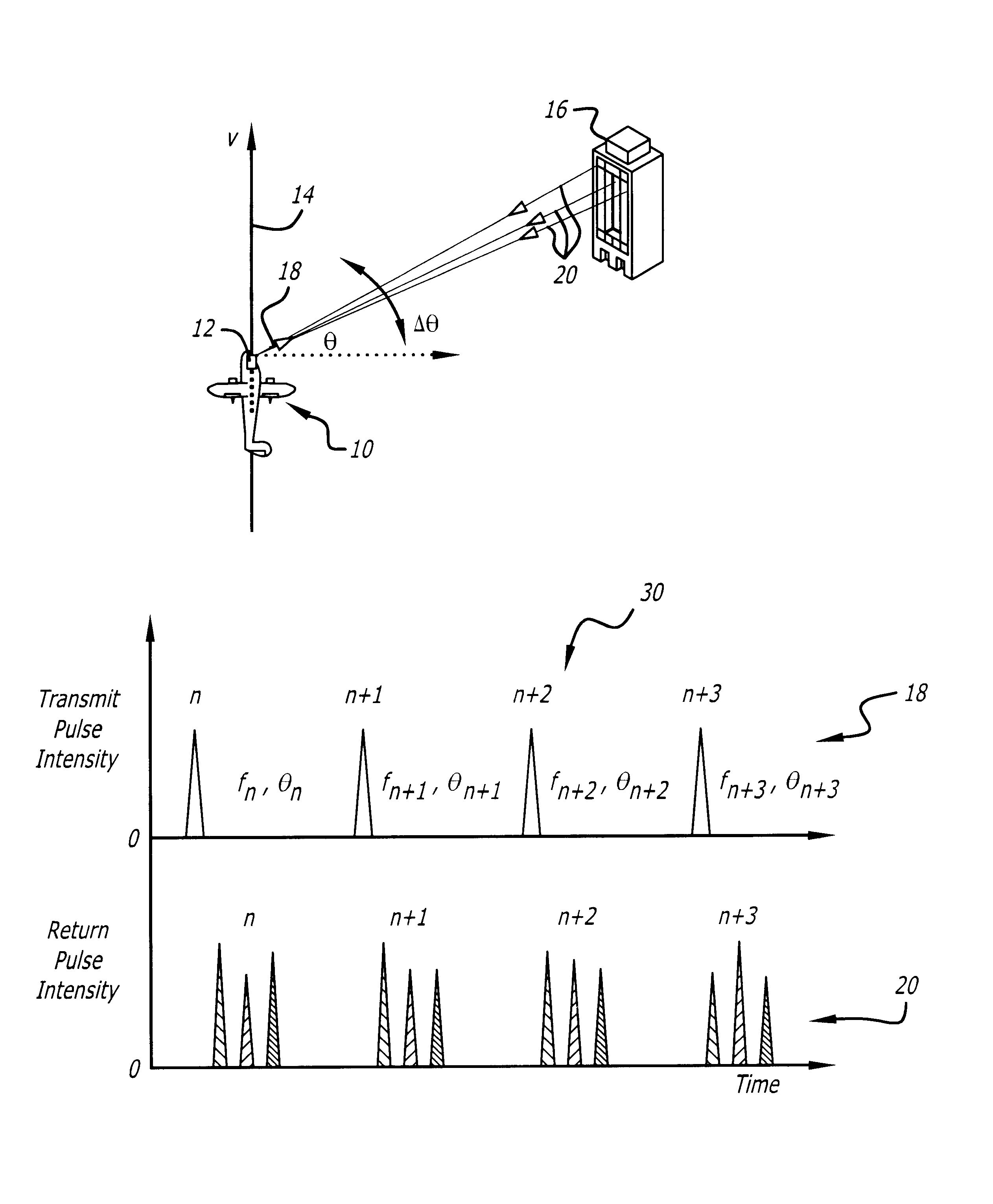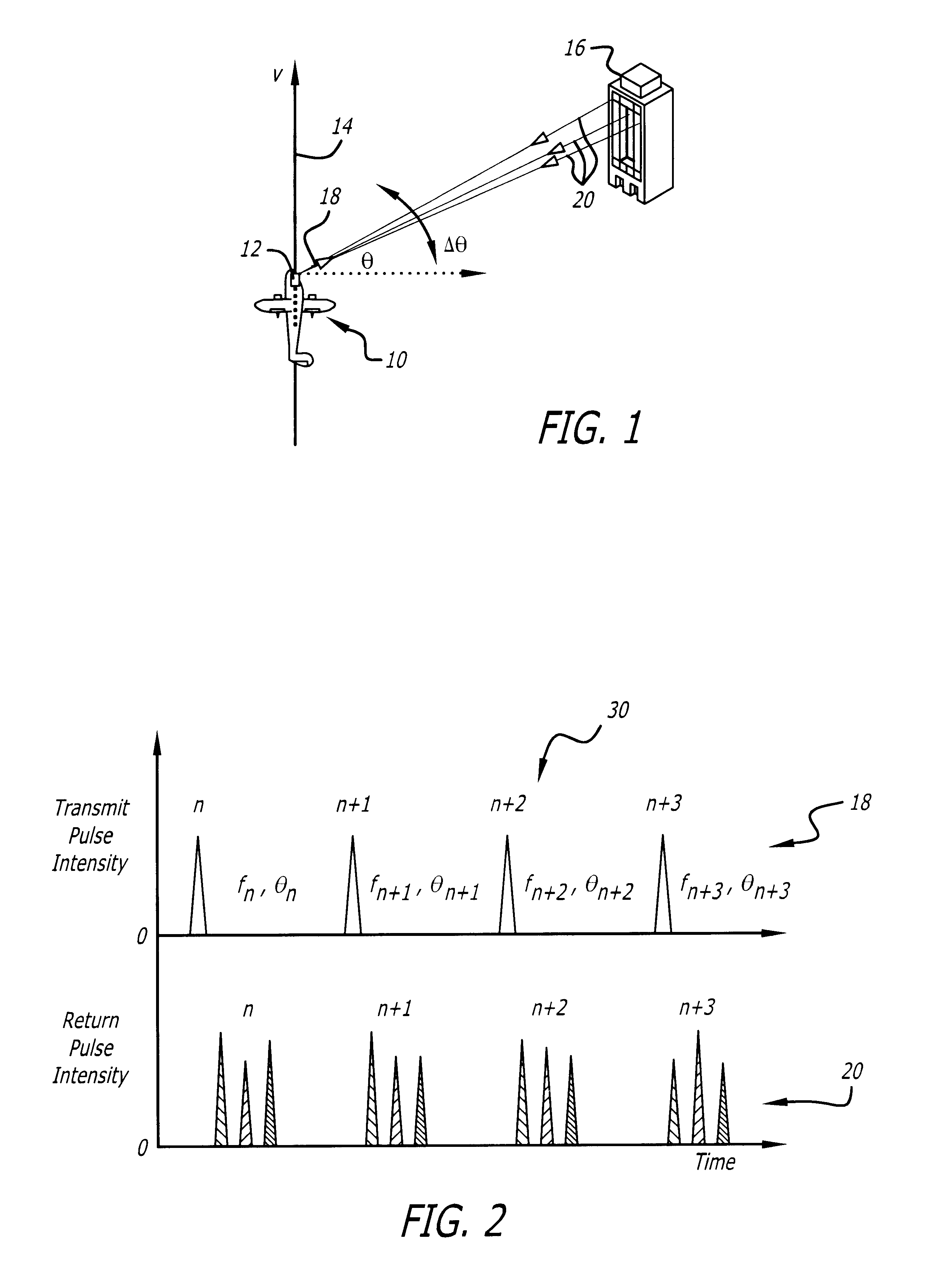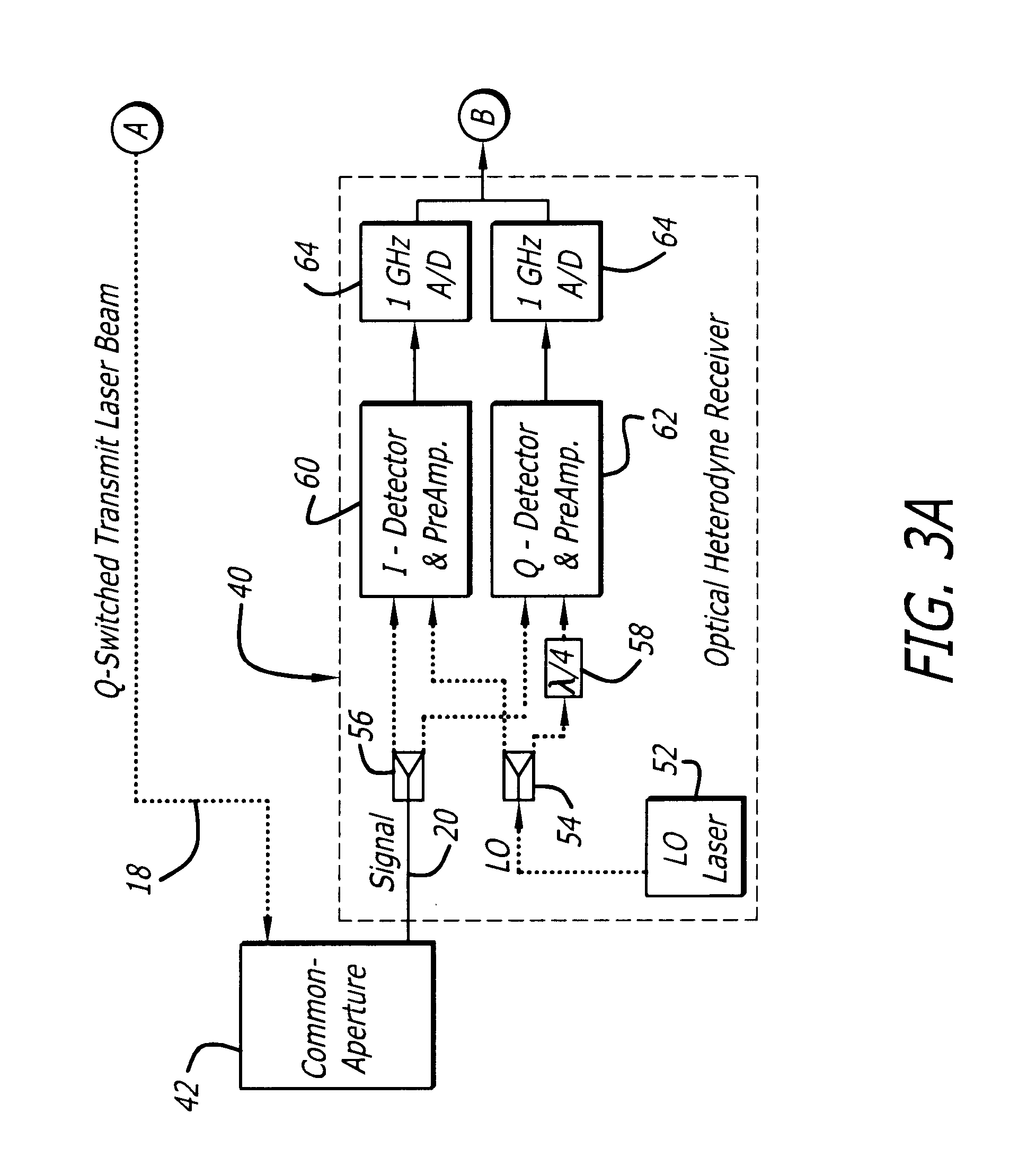Synthetic aperture ladar system using incoherent laser pulses
a laser pulse and incoherent technology, applied in the field of laser radar systems, can solve the problems of difficult or impossible implementation of certain types of noise filtering, affecting the performance of systems, and unable to perform noise filtering
- Summary
- Abstract
- Description
- Claims
- Application Information
AI Technical Summary
Problems solved by technology
Method used
Image
Examples
Embodiment Construction
While the present invention is described herein with reference to illustrative embodiments for particular applications, it should be understood that the invention is not limited thereto. Those having ordinary skill in the art and access to the teachings provided herein will recognize additional modifications, applications, and embodiments within the scope thereof and additional fields in which the present invention would be of significant utility.
FIG. 1 is a diagram showing an aircraft 10 employing a ladar system 12 constructed in accordance with the teachings of the present invention and illustrating general ladar principles of operation. The aircraft 10 has a velocity vector (V) 14 as it flies by a building 16. The ladar system 12 is mounted on the front of the aircraft 10 and transmits a laser beam 18 toward the building 16.
In the present embodiment, the transmitted laser beam 18 is a high-energy eye-safe Q-switched pulsed laser beam comprising a sequence of high-energy pulses. T...
PUM
 Login to View More
Login to View More Abstract
Description
Claims
Application Information
 Login to View More
Login to View More - R&D
- Intellectual Property
- Life Sciences
- Materials
- Tech Scout
- Unparalleled Data Quality
- Higher Quality Content
- 60% Fewer Hallucinations
Browse by: Latest US Patents, China's latest patents, Technical Efficacy Thesaurus, Application Domain, Technology Topic, Popular Technical Reports.
© 2025 PatSnap. All rights reserved.Legal|Privacy policy|Modern Slavery Act Transparency Statement|Sitemap|About US| Contact US: help@patsnap.com



